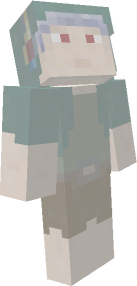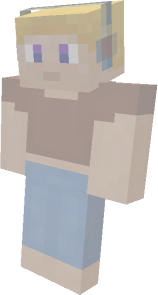Metaverse Part 2: Standards
Continued from Part 1: What is it?
You've probably already gathered from the previous post that I'm far from being anything close to being a good writer. So, to not embarass myself, and take little of your precious time, I will use this pretty list to order my thoughts quickly.
Though, one more thing beforehand: I'm going to start differenciating between "a metaverse" (a set of connected virtual worlds) and "the Metaverse" (similar to the "World Wide Web", based on widely accepted open standards). The difference can probably also be seen in the following points.
- Control - The Metaverse should not be controlled by a single entity, group, company or government. It should be designed from the ground up to allow anyone to host and control their own virtual world, just like websites.
- Open - In addition to anyone hosting a virtual world, which is powered by a server, anyone should be able to create their own server or client, to host or view virtual worlds. With just a single implementation, control can easily become an issue again. The Web does this the same way, with HTTP, HTML, JS and so on. Different browsers can display content generated by a countless number of different webservers made for different purposes, regardless of the language they were written in.
- Extensible - The standards and protocols powering the Metaverse should be extensible. This allows developers of servers and clients to experiment and improve experiences, which is especially needed due to the rapid improvements of technology and the unkown scope of the Metaverse. The base protocol should be stupid simple, possibly only handing connecting and disconnecting.
Done already? I remember having a few more points to make, but either way, that's the gist of it. So, making the Metaverse happen shouldn't actually be that hard, right? All we'd need is actually just a couple of bright minds coming together, designing some base standards and start working on some implementations.
Which brings me back to the a point I've brought up in the last part: How can I get in on this? There's a high chance some companies are already researching or developing metaverse related technology. There's also a chance nobody's currently working towards building a truly open Metaverse as I've tried to outline.
Just in case someone wants to bring this up: Yes, there currently exists some standards to display virtual worlds, but this leaves connecting users up to the application. Most of these standards are also based on or built on top of XML or similar human-readable formats, which I don't get. Hasn't time and experience by now proven that, if you don't mind me speaking my mind, this is complete horsecrap? We have the chance to start something big, why build it on some decade old standards we know doesn't fit our needs?
In the meanwhile, since I have so little to say, why not look at these other links?
- Fundamental Problems with Metaverse Implementations, an article by Josh McCormick, who also runs the /r/metaverse subreddit.
- 3D Virtual Worlds and the Metaverse: Current Status and Future Possibilities [PDF], a computer science article from 2013.
- A Maker’s Guide to the Metaverse, another more recent article talking about the ideal Metaverse in more depth, talking about more points. This also brought up the amazing tech that is Lucidscape, which I haven't heard anything of recently.


